How do you grow container tomatoes and get mouth-watering results from your efforts?
Let’s find out now…
1. Select the perfect location for your tomato plants
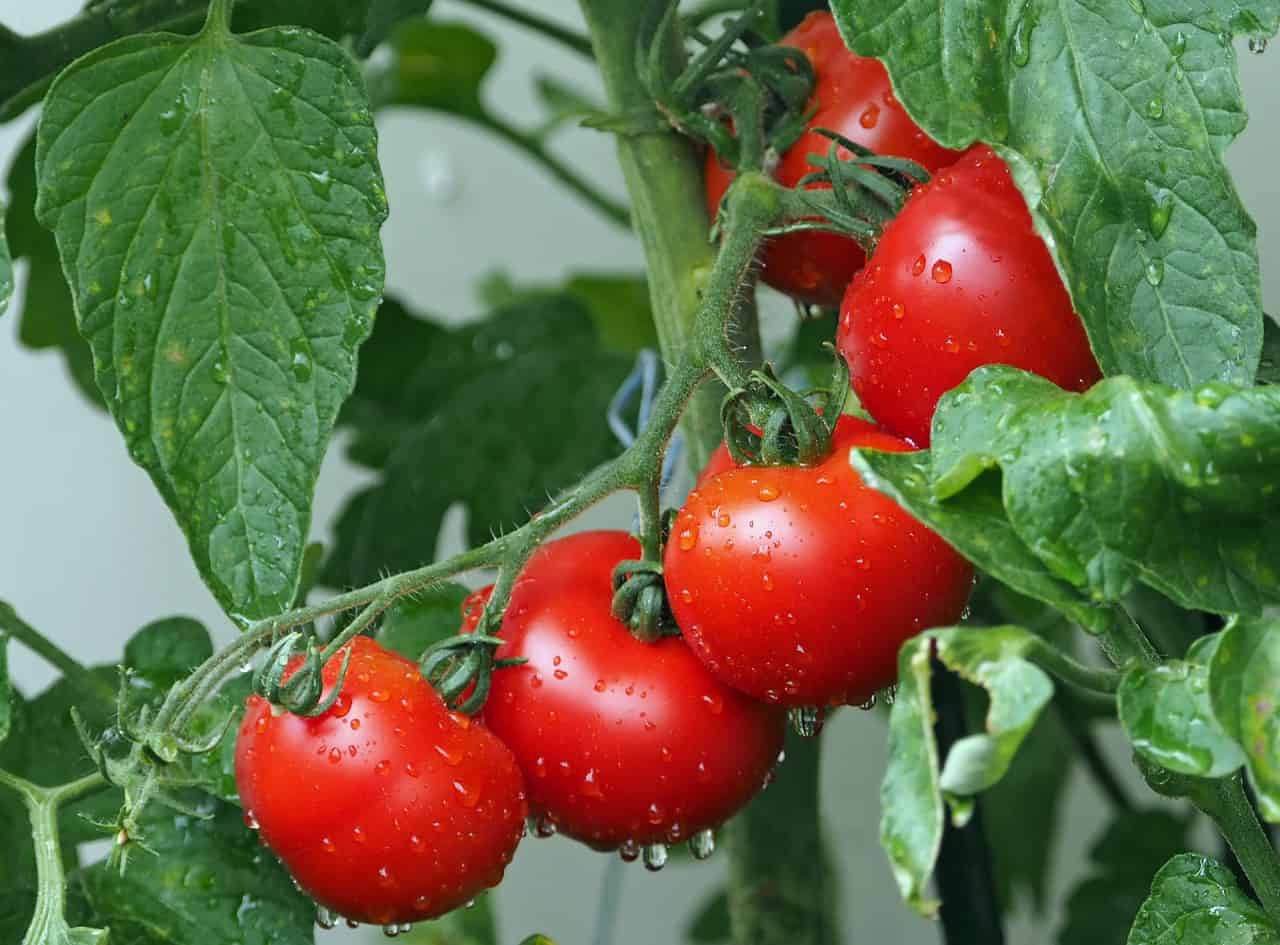
While tomatoes can be grown almost anywhere – within reason – they do prefer sunlight, and they do prefer that sunlight to last for at least six hours daily.
Avoid growing your tomato plants too close together.
You’ll want plenty of air circulation around each plant, which in turn helps to reduce fungal disease spreading from one plant to the other.
2. Which type of containers are best for tomatoes?
What are the best pots for growing tomatoes?
The containers for your tomato plants need to be large enough for the job at hand.
For cherry tomatoes, dwarf tomatoes and bush-type tomatoes – all of which are determinate plants – 3-gallon to 5-gallon pots will likely suffice.
On the other hand, for larger-growing plants – the indeterminate varieties – you’ll need tomato containers that have at the very least a 5-gallon capacity. Many tomato growers prefer to grow indeterminate tomato varieties (more vigorous growing varieties) in containers that have a 20-gallon capacity.
3. A quality potting mix is best for tomatoes in containers
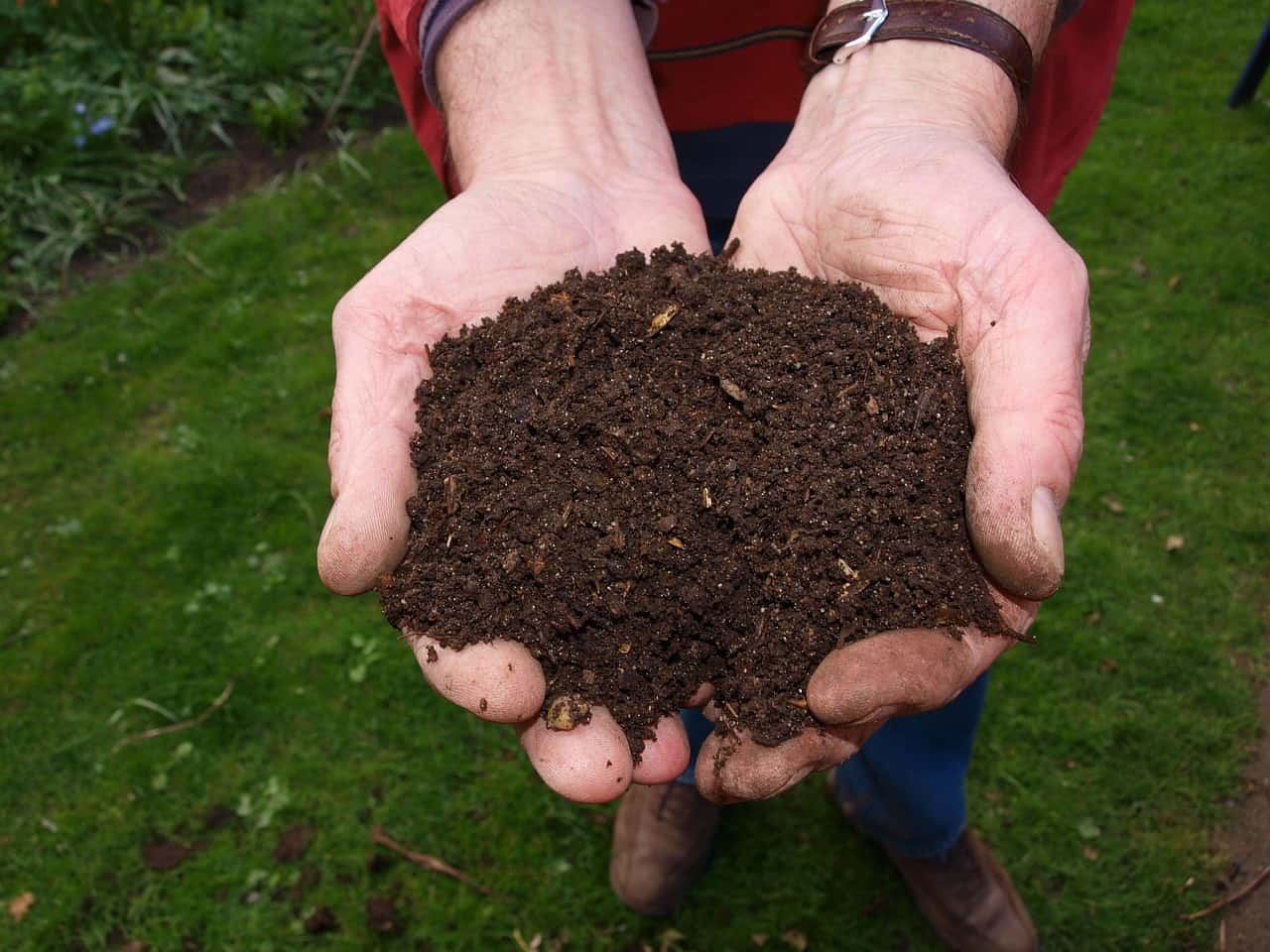
It may be tempting to grow your container tomatoes in garden soil.
This should be avoided, however, as garden soil will likely be devoid of the right consistency for the plants – it may be too heavy, the pH may be off (pH can easily be corrected and should ideally be around 6.2-6.8), it most likely will not have the right nutrient content.
What’s more, garden soil can harbor pests and diseases.
A quality potting mix, perhaps one that has been specially made for growing tomatoes, is the way to progress.
Quality potting mixes have been sterilized so they are ‘clean’ growing mediums.
Further, as mentioned, a quality potting mix has a good ratio of nutrients and minerals where garden soil is likely devoid.
If you need a seed starter potting mix for your tomatoes, a highly recommended one is Hoffman Seed Starter Soil.
Hoffman Seed Starter Potting and Planting Mix
For an excellent potting mix (to fill your containers and to transplant your tomato seedlings into) there are ever so many available. One you may wish to try is FoxFarm Ocean Forest Organic Potting Mix:
4. Choose determinate tomato varieties
For container-grown tomatoes, the wise choice is to select determinate tomatoes.
Determinate tomatoes grow, in general, to 3 or 4 feet in height.
You can get both heirloom and hybrid cultivars that have a determinate growing habit.
5. Choose tomato varieties that are suited to containers
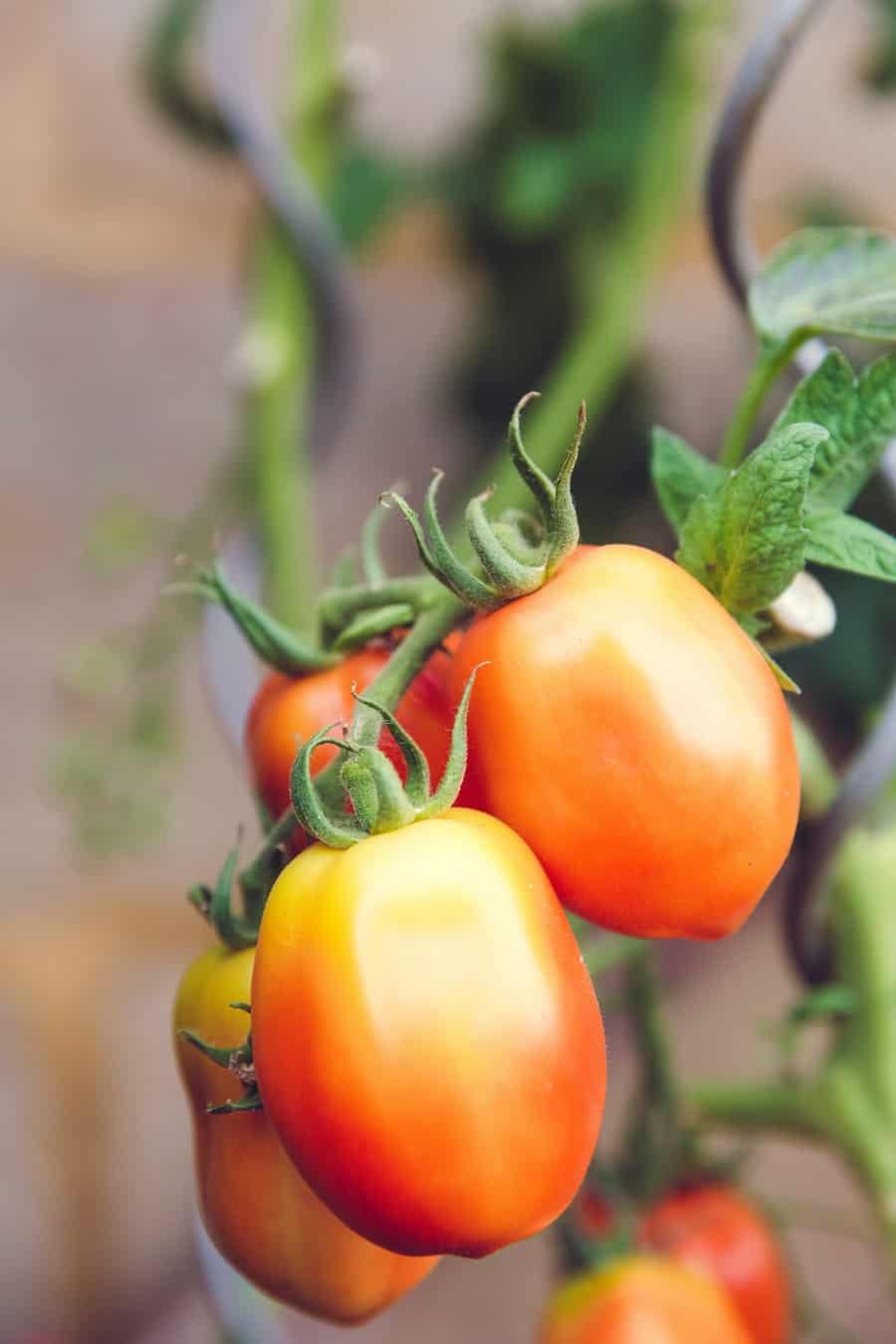
Though any variety of tomato can be grown in a container, you could do some research to find out which varieties perform best in pots.
Here are a few tomato varieties you might consider:
Good Container Tomato Varieties
Patio Princess
Quite small in growing habit, Patio Princess reaches around 2 feet in height and will produce fruits on a continual basis – fruits that are quite delicious!
Sweetheart of the Patio
Again, as the name suggests, Sweetheart of the Patio is suited to patio-growing projects.
It’s nice and compact and produces tomatoes around 1 inch in diameter which are simply bursting with flavor.
Bushsteak
Bushsteak grows to around 20-24 inches tall.
This plant produces large-sized, very juicy fruits.
Marglobe
Producing plenty of globe-shaped fruits, Marglobe is a determinate tomato plant that offers a lot of disease resistance.
The fruits have a tendency to ripen around the same time, so you may wish to consider canning as an option.
Fruits should be ready for picking after about 70-75 days into the growing period.
Gardener’s Delight
This is an heirloom cherry tomato and is certainly a firm favorite among gardeners.
The fruits are around 1-inch diameter and the taste is rich and sweet.
What’s an heirloom tomato?
It’s all about the seeds. Heirloom tomato seeds are taken from tomato plants that produce the best fruit. This means tomato growers can choose what’s best – shape, colour, size, juiciness.
Heirloom tomatoes frequently are open-pollinated. This means they are naturally pollinated by insects, birds, by human intervention, or by the wind. So there’s no genetic modification going on here.
Sweet Baby Girl
Though this tomato is indeterminate, in general, it doesn’t have a tendency to become overly tall in habit.
The fruits are rich and full of sweetness.
Baxter’s Bush Cherry
Featuring a rather vigorous growing habit, Baxter’s Bush Cherry is still suited to the balcony, patio, decking area, etc.
The fruits are resistant to cracking.
A further bonus is that this determinate plant does not require cages or staking.
Balcony
This tomato plant reaches the ideal size for container growing.
The fruits are produced in copious quantities and are approximately 2-2.5 inches in diameter.
Extremely flavorful!
Tumbling Tom Yellow
This tomato plant, with its yellow fruits, is the ideal choice for container growing and also for hanging baskets.
Fruits, which are wonderfully sweet, are 1-2 inches in diameter.
Stupice
Interesting name here, which conjures up thoughts along the lines of ‘stupid.’ But there’s nothing stupid about this little tomato plant!
Stupice does well in the container and produces fruits that are 2-3 inches in diameter.
The fruits ripen particularly quickly, providing you with a bountiful supply relatively early in the growing season.
You can read more about growing Stupice tomato plants here.
6. How to plant container-grown tomatoes
How deep to plant container tomatoes?
Quite unlike most other plants, tomatoes benefit from deep planting.
This encourages a stronger root system than otherwise.
Experts vary in their opinions with regard to how deep is best.
Nevertheless, you can be sure that your plants will be healthy if you plant 3-4 inches of the stem into your growing medium.
7. Organic fertilizer
Organic fertilizer options cater to nutrients that are ‘clean.’
Organics include bone meal, soy meal, blood meal, and more besides.
Using any of these organics will provide a healthy boost of nutrients at approximately the ‘right’ ratio of nitrogen, phosphorus, and potassium (the all-important N-P-K ratio).
Here’s an article that explains about N-P-K ratios and why they are important.
Giving your potting mix a nutrient boost is best done when you know what nutrients are in the potting mix. Otherwise, it’s just a guessing game.
Obviously the nutrient blend will be listed on your potting-mix container. Which is great if you still have the container. If not – if you don’t have the container, you can check out N-P-K ratio using a soil tester or testing kit.
Most soil testing kits will provide you with an account of the macronutrient content (nitrogen, phosphorus, potassium). They’ll also give you the pH reading. That’s great and all but what about the other nutrient content?
To the rescue is this soil-testing kit from MySoil. This kit will provide details of the macronutrients, the pH, and also details of these nutrients as well:
Calcium
Magnesium
Sulfur
Iron
Manganese
Boron
Copper
Zinc
Sodium
MySoil Soil Testing Kit for Nutrient Analysis
8. Watering your container-grown tomatoes
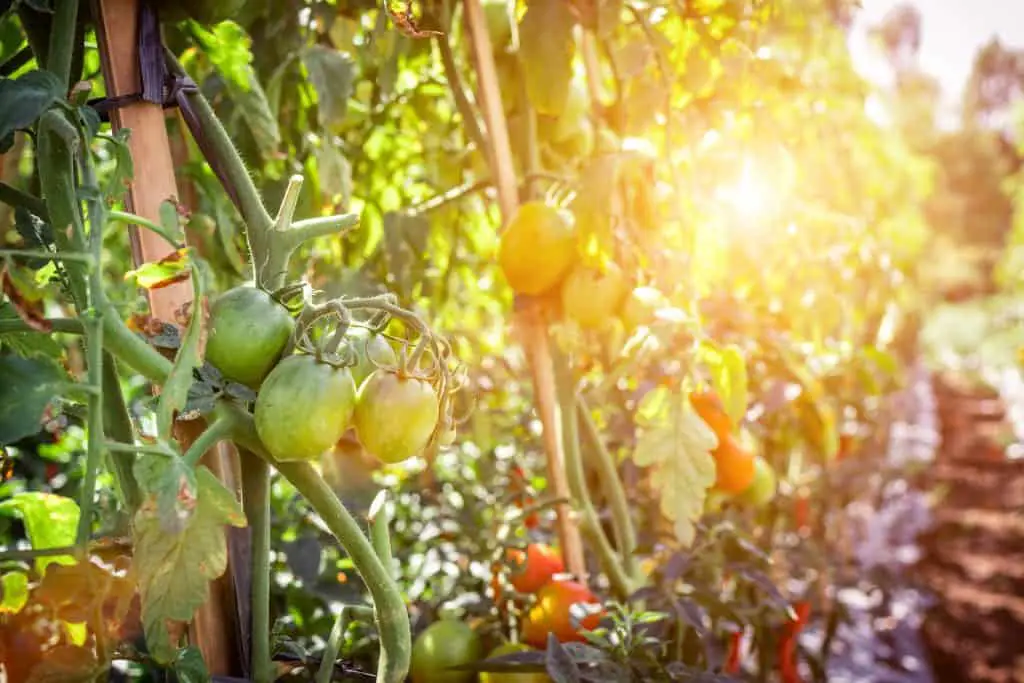
A philosophy of regular watering is good policy.
This will ensure that the soil remains moist but (should) avoid over-saturation.
Before watering, touch the growing media with your fingers to check how moist (or dry) it is.
Don’t be tempted to water from above and splash the foliage. Rather, water around the roots.
Watering from above will dampen the foliage. This then encourages fungal infection.
9. Providing support for your container-grown tomatoes
Almost all tomato plants call for some kind of support for the stem as they grow.
Without support, particularly when the plants begin to bear fruit, there’s every chance that the stem, and/ or the branches will snap.
You can use wooden stakes for this purpose, or you can use a tomato cage. Or indeed, you can use a step-like staking system for your container tomatoes like the one offered by Gardener’s Supply.
Gardener’s Supply tomato stacking ladders are a good option for tomato plant staking. Support is between 22 inches and 78 inches in height so these tomato supports are plenty high enough for taller, indeterminate tomato plants as well as container-grown determinate varieties.
Gardener’s Supply Tomato Stacking Ladders
And don’t forget your tomato plant tie-ins. The Velcro adjustable plant ties are reusable, gentle on the plant stem, and a great price.
Velcro Adjustable Gentle Tomato Plant Ties
10. Removing suckers and pruning
Any suckers that you see emerging from the main tomato plant stem should be snipped off.
These suckers do not offer any benefit in terms of achieving more fruit. In fact, quite the opposite. They simply hog nutrients and water that would be better invested in the remainder of the plant and the fruit.
It’s possible that the only other pruning that’s required is to remove branches that have become too lengthy. And, indeed, the lower branches of the plant because it’s likely that is where the leaves will be quite tarnished, given time.
This – the yellowing and browning of the lower leaves – should only occur later on in the growing season.
11. Weekly inspection
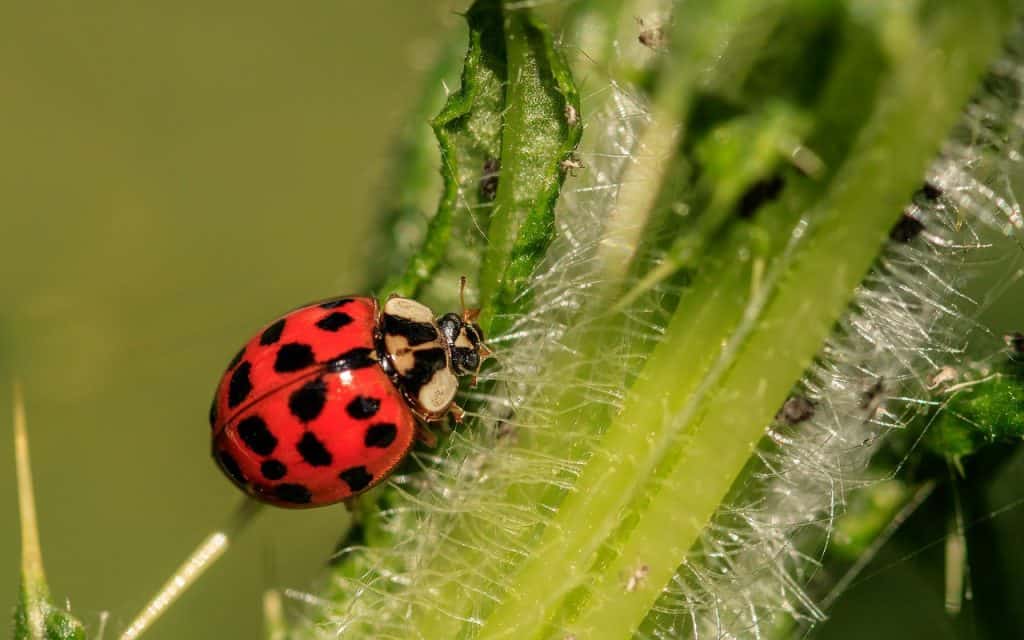
Inspect your tomato plants at least once each week for signs of pests and diseases.
Tomato plants are particularly prone to aphids, whitefly, cutworms, flea beetles, hornworms, nematodes, and more.
On the other hand, diseases such as blossom-end rot, fusarium wilt, and damping-off can, likewise, prove to be a real nuisance.
Ladybugs, or ladybirds, enjoy feasting on aphids, and, as such, are regarded as beneficial predatory insects to host within your tomato plant crop.
Read: 7 Beneficial Insects for Tomato Plants
12. After the final tomato harvest
The containers should be thoroughly sterilized once your tomatoes have offered their final crop.
A proprietary bleach solution is ideal for this purpose.






8 thoughts on “How to Grow Container Tomatoes – 12 Top Tips for Growing Mouth-Watering Container Tomatoes”